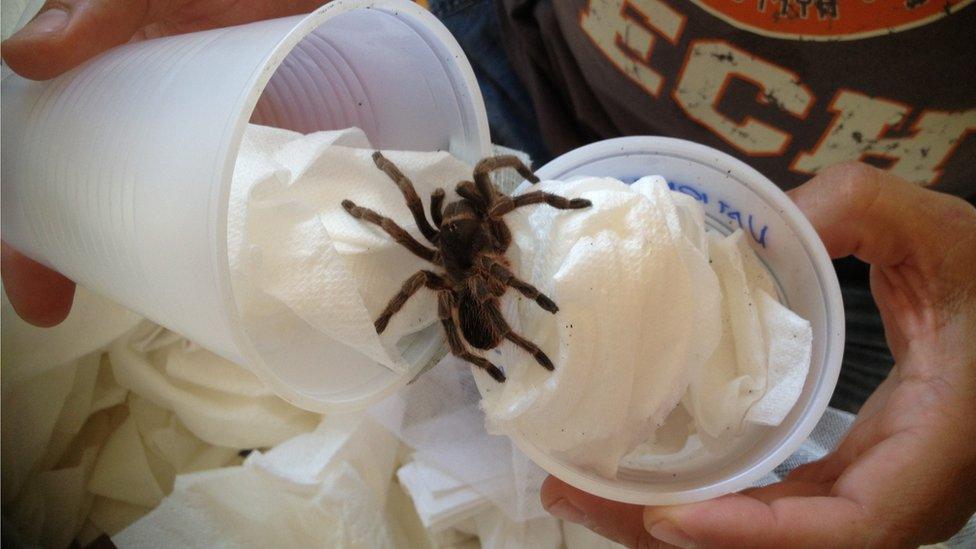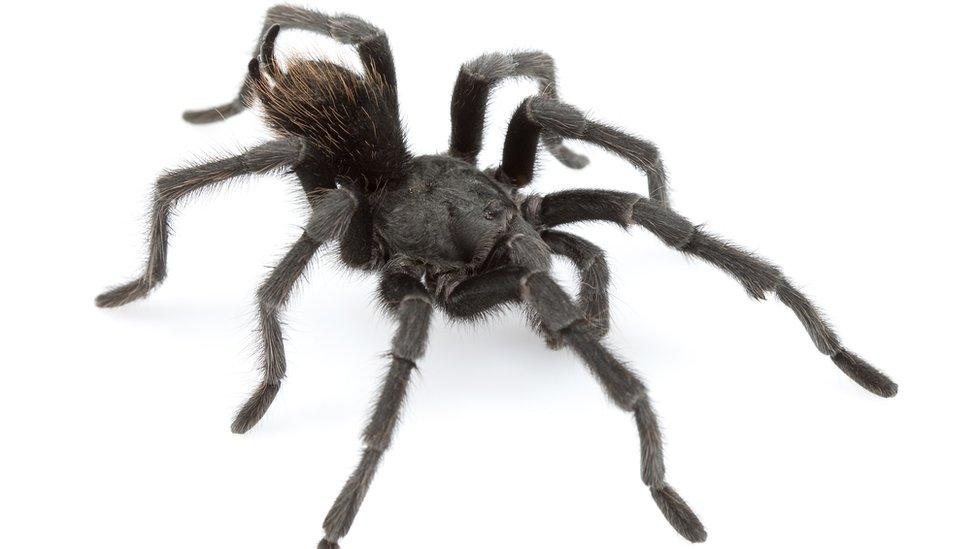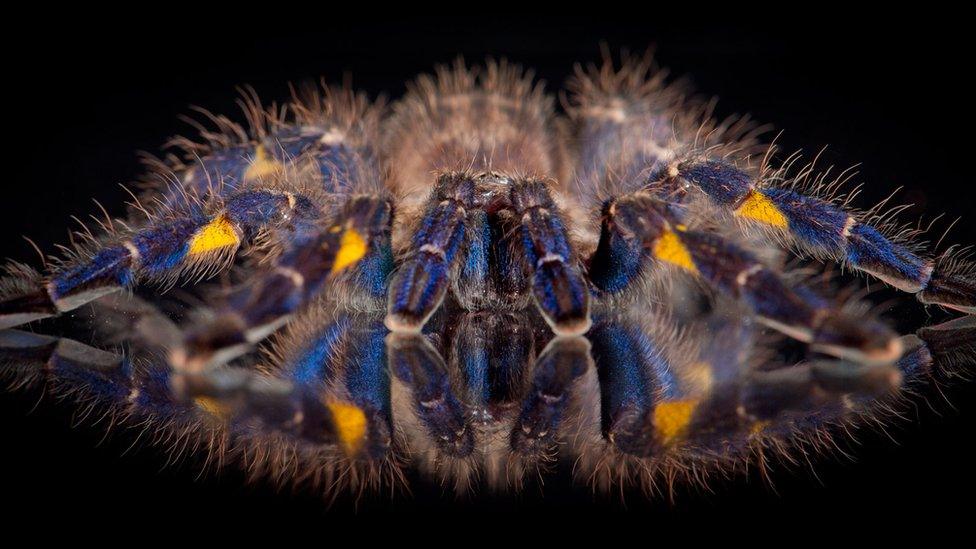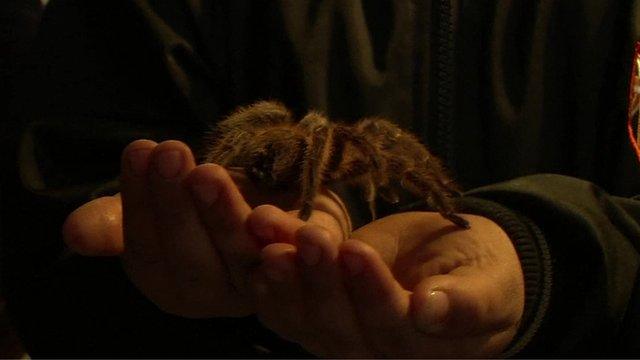Hundreds of tiny Montserrat tarantulas hatch in zoo
- Published
The spiders have never before been bred in captivity and very little is known about them
A clutch of about 200 Montserrat tarantulas has hatched at Chester Zoo - the first time this rare spider has been bred in captivity.
Very little is known about the species, found on just the one Caribbean island.
A dozen of the hairy brown animals were brought back by a zoo keeper in 2013, after observing them in the wild on multiple field trips.
Three years later, after much study and behavioural management, one female has produced 200 British-born baby spiders.
"It's kind of a race against time, whether you can synchronise the sexual maturity between individuals," said Chester Zoo's curator of lower vertebrates, Gerardo Garcia.
'Popping out of the earth'
Part of the problem is that male Montserrat tarantulas live for about 2.5 years at the most, whereas the females live much longer and develop much more slowly.
The few males Dr Garcia had collected, therefore, were a precious resource. There were nervous moments for the team when they started match-making.
As with many other invertebrates, those encounters were risky for the males.
"The female can take it as a prey, rather than a partner," Dr Garcia told the BBC. "There were a lot of sweaty moments."

Risky business: Montserrat tarantulas mating in their enclosure at Chester
He and his colleagues observed a very tentative courtship ritual, in which the male drums out an elaborate rhythm on the female's web - which is spun on the ground near her burrow.
Even after three apparently successful encounters, there was another anxious wait for Dr Garcia. All three pregnant females disappeared.
"They literally dig a burrow in the ground, and they're gone," he said. "They don't feed, they don't show up, we don't know what's going on. You just have to leave it for several months and see what happens.
"Then eventually... spiders started popping out of the earth like crazy. From one single burrow, one female, we had about 200 tarantulas - tiny spiderlings."

The spiderlings are just a few millimetres across

Researchers will now be able to observe the tarantula's complete life cycle
Those babies - the first spiderlings of their species to be observed by scientists - are now being very well looked after.
"We're keeping them in small, individual pots," Dr Garcia said. "A member of staff is feeding them one-by-one with small flies, at the beginning. Then we'll go for bigger prey like crickets."
In a year or two, these spiders will in turn become part of the breeding program. After all, there are no males left in the small colony of adults; they die after mating.
Frog food
Being able to see the tarantula's complete life cycle is valuable, Dr Garcia explained, because there is much to learn about these animals.
"We don't know too much about tarantulas in general, in the Caribbean. It's a taxonomic group that's very uncertain."
In fact, the Montserrat species has only been formally described on the basis of a single, male specimen, collected 100 years ago.

"Suddenly spiders started popping out of the earth"

Family resemblance? Adult Montserrat tarantulas are 15-20cm across
"At the moment we're working with a specialist at the Natural History Museum to describe the other sex, the female."
It was that lack of knowledge that led Dr Garcia to collect some wild adults on a conference trip to Montserrat three years ago.
He became interested in the tarantulas on a previous field trip, when he and a team of other zoologists made a striking observation: these 15-20cm spiders are a prey item for the Caribbean's famous - and critically endangered - mountain chicken frog.
These very large frogs had been known to eat crickets, millipedes, smaller frogs and lizard, and even bats. But when Dr Garcia and colleagues reported three of the frogs eating tarantulas in the wild, external, it was a surprise.

The tarantulas make a tasty morsel for the endangered mountain chicken frog

Montserrat is home to the Soufriere Hills Volcano, active since 1995
"You would never imagine a frog would go for a big tarantula, but in fact it does," he said.
This evidence plays into Dr Garcia's view of the hairy spiders as a beautiful part of the natural world, rather than a threat.
This particular species does bite, and is too jumpy to be a good pet, but is not dangerous to humans.
"We try to avoid that perception about dangerous, poisonous or horrible species," said the zoo keeper, who opened his Montserrat tarantula shipment at home with his children.
"If a frog can kill and eat a tarantula, they cannot be so bad!"

Dr Garcia collected the spiders on a conference trip to Montserrat in 2013

About a dozen specimens made the trip back to the UK
Follow Jonathan on Twitter, external
- Published4 February 2016

- Published28 November 2015

- Published16 August 2015

- Published4 June 2013

- Published16 May 2011